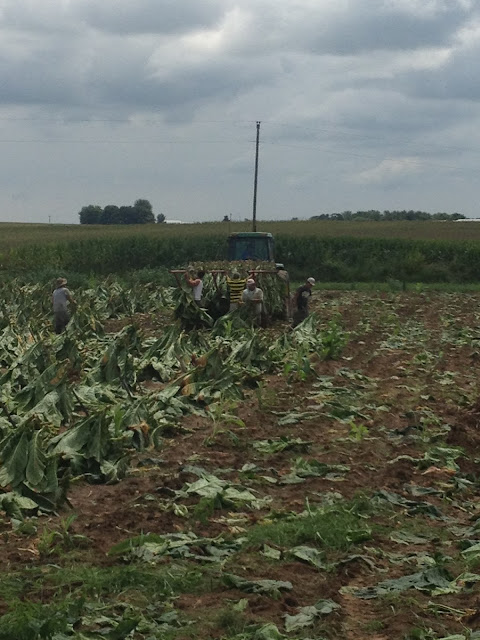 |
| Our H2A crew leader Jorge. He has been with us since 1999 and is valuable member of our team. Jorge is pictured as the men finish up topping the last field of tobacco for the year on July30th. |
 |
| All the tobacco wagons have to be prepared for cutting season. We have a lot of wagons and even more tires to repair! Sherman Marklin is pictured changing a flat. |
 |
| A field of tobacco after topping. |
 |
| The first day of tobacco cutting August 1, 2013. |
 |
| David Brown, Sherman Marklin, and Kevin Dukes making repairs to a tobacco wagon. |
 |
| Jose Ramirez pictured with a grande las oja de tobacco. |
 |
| Workers stand on the tiers and hand the tobacco up in the barn. |
 |
 |
| Slabs in a barn waiting to be fired. |
 |
| Workers must hand each stick up into the barn to be hung on the tiers for curing. |
 |
| Sawdust is added on top of the slabs to prepare the barn for firing. |
 |
| Hardwood slabs (oak & hickory) are covered with sawdust to fire cure tobacco. |
 |
| Smokey Barns |









No comments:
Post a Comment